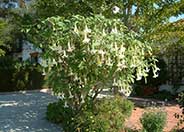
Common name:Angel's Trumpet, Datura
Botanical name:Brugmansia X candida
A tender, subtropical shrub that grows to 12', the Angel's Trumpet shows huge, felty leaves and enormous, pendant trumpet-shaped flowers. It has a sweet, heavy fragrance at night. It should be grown in sun to part shade, with average to little summer watering. The growth rate is faster with fertilizing, but it is more prone to insect damage. This variety seems to recover faster from hard frosts. -Montery Bay Nursery
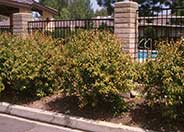
Common name:Shiny Xylosma
Botanical name:Xylosma congestum
This medium sized, mounding evergreen shrub with lustrous yellow green foliage produces new growth that is tinted rosy red. It has a growth habit that is loose, graceful and spreading.
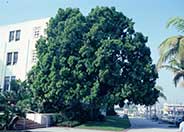
Common name:African Fern Pine
Botanical name:Afrocarpus elongatus
Soft, narrow, pointed leaves on graceful arching branches characterize this plant. The foliage is gray green, and the plant can be used as an individual specimen, screen, or even a small tree.
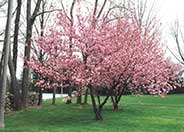
Common name:Kwanzan Japanese Cherry
Botanical name:Prunus serrulata 'Kwanzan'
This vase-shaped, deciduous tree is 30' high and 20' wide, with double, rosy pink flowers and wonderful fall colors of bronze orange to orange red.
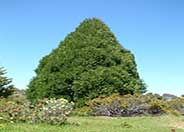
Common name:Leyland Cypress
Botanical name:Cupressocyparis leylandii
The Leyland Cypress is easy to grow, and will become a tall, evergreen tree with a dense crown that is conical to columnar in shape. While its leaf form, size and shape resemble those of the Cupressocyparis nootkatensis, its branchlets are finer, longer and more slender. It combines well with broadleaf evergreens, low junipers, and barberry.
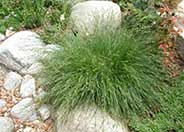
Common name:California Field Sedge
Botanical name:Carex praegracilis
This native Carex can be successfully used as a lawn substitute but requires significant water to obtain good coverage. Once coverage is reached, water can be reduced and maintenance is close to zero. Unmowed, the plant can be used effectively in a variety of conditions and will reach a height of 6" or under and spreads up to 2' by rhizomes.
Photographer: GardenSoft
Maintain a two to four inch layer of mulch on the soil surface to reduce weeds, infiltrate rain water, and reduce compaction.
Replace turf with groundcovers, trees, and shrubs. If you have areas where no one uses the grass, patches that do not grow well, or a turf area too small to water without runoff, consider replacing the turf with water-efficient landscaping.
Attract, or buy beneficial insects such as ladybugs and lacewings to control pest outbreaks in your garden.